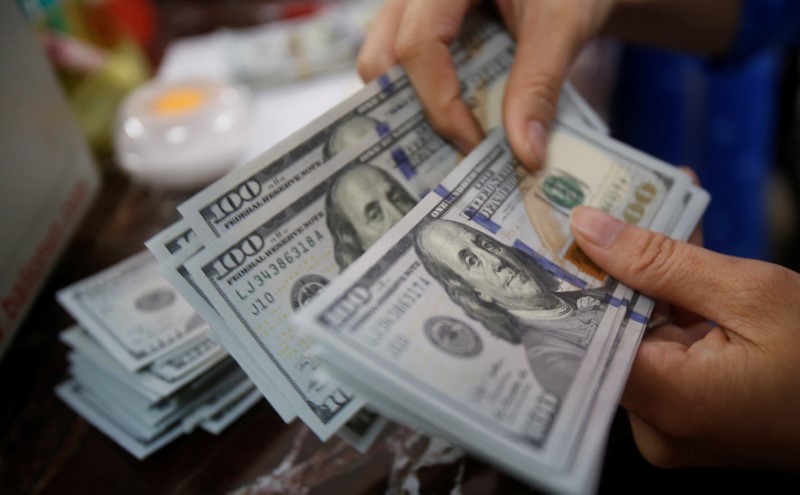By Gina Lee
Investing.com – The dollar was up on Thursday morning in Asia but retreated as the week’s rally in U.S. Treasury yields also cooled. However, higher commodity prices supported Canadian and Australian equivalents.
The U.S. Dollar Index that tracks the greenback against a basket of other currencies inched up 0.03% to 95.528 by 12 AM ET (5 AM GMT).
The USD/JPY pair inched up 0.09% to 114.43. Japanese trade data released earlier in the day showed that the trade balance was –JPY582.4 billion ($5.09 billion) and the adjusted trade balance was –JPY0.44 trillion in December. Exports grew 17.5% and imports grew 41.1%.
The AUD/USD pair was up 0.40% to 0.7238, with Australian data released earlier in the day showing that the employment change was 64,800. The data also showed that the full employment change was 41,500 and the unemployment rate was 4.2% in December.
The NZD/USD pair was down 0.27% to 0.6767.
The USD/CNY pair inched down 0.02% to 6.3437, with the People’s Bank of China cutting the one-year loan prime rate (LPR) from 3.8% to 3.7%, and the five-year LPR from 4.65% to 4.6%, earlier in the day.
The GBP/USD pair edged up 0.14% to 1.3624. The two-year gilt yield rose to 0.958% on Wednesday, the highest level since March 2018, and gave the pound a boost.
The Australian dollar extended Wednesday’s gains, while the Canadian dollar hit a 10-week high the same day before paring gains.
"Overnight commodity prices were the big driver for commodity currencies, but you've still got the undertone that the omicron COVID-19 variant is not going to have a lasting detrimental impact on the global economic outlook," Commonwealth Bank of Australia (OTC:CMWAY) senior economist and currency strategist Kim Mundy told Reuters.
Oil was mixed on Thursday but broadly remained near October 2014 highs. Newcastle coal futures are at their highest since October 2021.
Governments worldwide are beginning to ease quarantine rules and reviewing COVID-19 curbs despite the spread of omicron continuing. This attempt towards a semblance of normalcy was motivated by omicron's lower severity and boosted a rally in commodities.
Meanwhile, investors are also bracing for the U.S. Federal Reserve to tighten monetary policy faster than expected in its policy decision to be handed down on Jan. 26. Fed funds futures have fully priced in an interest rate hike in March 2022, with four hikes expected within 2022.
